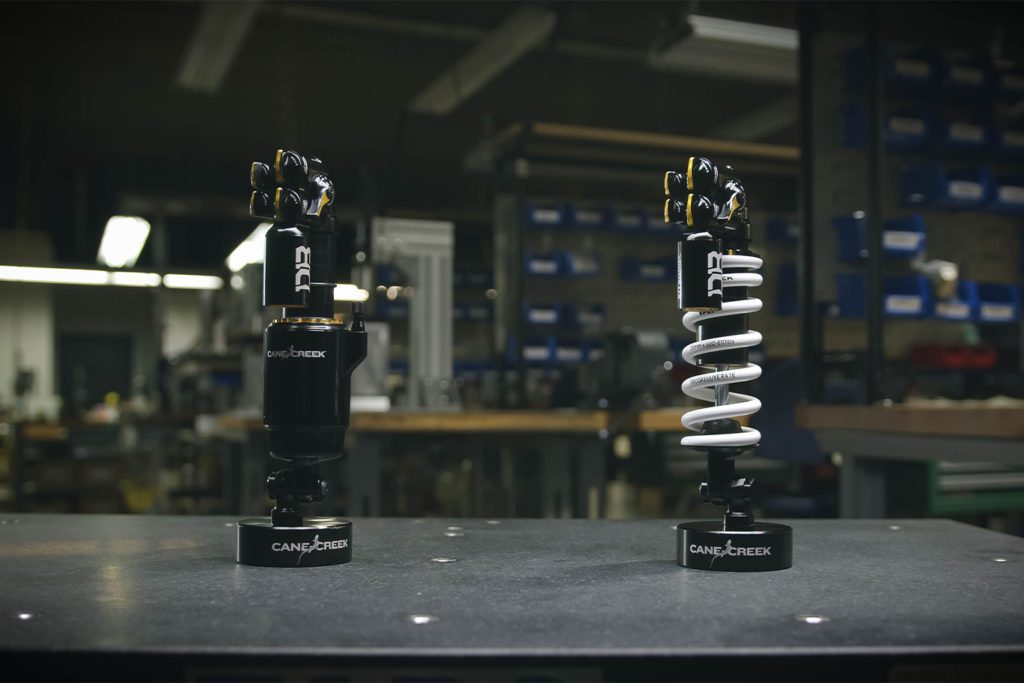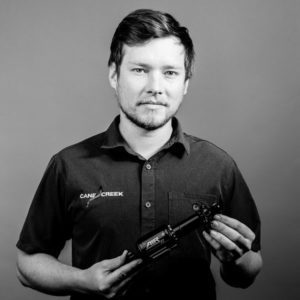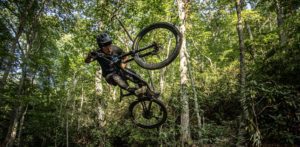PayPal now available at checkout
Free US Shipping On Orders $99+
Extended Support Hours! Tuesday to Thursday: 10 am - 7 pm
Previous slide
Next slide


During the development of a cycling product at Cane Creek, ride testing plays a critical role in ensuring that the product meets and/or exceeds our expectations of performance and durability. As Product Manager of the Engineering, Research and Development Team at Cane Creek Cycling Components, I have the opportunity to help brainstorm ideas and then transform those ideas into deliverable products. The true reward comes at the moment we bolt that product onto a bike and ride it for the first time. DB Kitsuma was no exception to that process. We dreamed of a shock that would ultimately replace our DB AIR CS and DB COIL CS. Our plan for DB Kitsuma would expand on our 15 year legacy of twin-tube dampers with an updated damping range and higher performance. Our goal was to make the interface a lot easier to use and understand without taking away the key features of what makes Double Barrel shocks so special. Having put it to the test for the past couple of years, it’s a product I am very proud to bring to market as a Product Manager.
 Rewind back to 2018, our first samples of DB Kitsuma were CNC’ed here in Fletcher, NC out of aluminum block and were retrofitted with new and old parts to test our tool-free adjuster and key damping updates. During early design stages we try to keep our prototype testing low-profile and out of the public eye before we know the product will make it to production. However, it can be challenging to keep innovative ideas secret, especially when you are testing out products on local trails. Often prototypes can be rather large and bulky which meant we had to get creative when hiding the DB Kitsuma. We avoided group rides with non-Cane Creek employees, hid the rear shock between our legs when out on public trails, and even placed socks over our new and innovative design. Often, we found the efforts we made to hide our new design draw more attention and solicit more questions. Our goal as a development team is to stifle excitement until we know for a fact that our product is customer-ready.
Rewind back to 2018, our first samples of DB Kitsuma were CNC’ed here in Fletcher, NC out of aluminum block and were retrofitted with new and old parts to test our tool-free adjuster and key damping updates. During early design stages we try to keep our prototype testing low-profile and out of the public eye before we know the product will make it to production. However, it can be challenging to keep innovative ideas secret, especially when you are testing out products on local trails. Often prototypes can be rather large and bulky which meant we had to get creative when hiding the DB Kitsuma. We avoided group rides with non-Cane Creek employees, hid the rear shock between our legs when out on public trails, and even placed socks over our new and innovative design. Often, we found the efforts we made to hide our new design draw more attention and solicit more questions. Our goal as a development team is to stifle excitement until we know for a fact that our product is customer-ready.
By summer of 2020 we had gone through several successful shock prototype stages. Each stage inched us closer to the final product we’d been dreaming about. I personally clocked over 200 hours of moving time and hundreds of thousands of vertical feet of descending on various DB Kitsuma shock prototypes. In our final stage of testing, we felt we had successfully advanced damping performance, damping range, and dialed in ergonomics of the tool-free adjusters to our satisfaction. To prove the shock was ready for production I felt it absolutely necessary to increase the frequency and speed of testing and ride the newest version of the shock.
As a cycling company based out of Western North Carolina we are at a huge advantage for testing product year-round on some prolific trails just like the shock’s namesake. On a standard “trail ride” in Western North Carolina, riders can average between 10-20 miles and about 2000-4000 ft of descent. But only 25%-30% of the ride distance is descending which is crucial to suspension testing. Although our location allows us to ride year-round we lack the plethora of lift-assisted bike parks our counterparts may have access to in the Northeast or out West.
To properly increase the testing frequency of DB Kitsuma I decided it was critical to travel to some bike parks in the Northeast and put more miles of descent on the shock. Keep in mind, we were testing our product during a pandemic. Given COVID-19 was at the forefront of our thoughts we had to be mindful of how we would conduct our final stages of testing. I made the decision to drive rather than fly and camp rather than rent a hotel. My girlfriend and I built out a bed frame in the back of a Ford E-150 van, filled it with camping gear, threw our bike rack on it, and headed north with the intention of getting as much riding time on the shock as possible while limiting our interactions with others.
Over the course of 10 da ys we drove 2500 miles to visit Burke Mountain in Vermont, Highland Bike Park in New Hampshire, Killlington Bike Park in Vermont, and Thunder Mountain Bike Park in Massachusetts before returning home. After 6 days, 76.2 miles, and 47,800 vertical feet the goal of accelerated testing was a success. In just under a week, I managed to ride the equivalent of 30-40 standard test rides worth of downhill back home.
ys we drove 2500 miles to visit Burke Mountain in Vermont, Highland Bike Park in New Hampshire, Killlington Bike Park in Vermont, and Thunder Mountain Bike Park in Massachusetts before returning home. After 6 days, 76.2 miles, and 47,800 vertical feet the goal of accelerated testing was a success. In just under a week, I managed to ride the equivalent of 30-40 standard test rides worth of downhill back home.
Bike parks are a great place to ride test because they offer diverse terrain. I was able to switch between jump trails and technical natural trails each lap and change my damping settings per lap as needed. With previous shocks, I never changed my tuning between trails at a park due to inconvenience and needing tools. After riding the DB Kitsuma shock for the past two years, I find I am eager to make damping adjustments per trail as it makes the changes so convenient and easy. I can actually tell the difference the changes are making which leads to more knob turning!
We released the DB Kitsuma shock to the public just three weeks ago and I am still putting miles and hours on the same test shock I bolted to my bike in June. After vigorous testing, the shock continues to operate flawlessly and I am constantly using all of the features it has to offer. DB Kitsuma is a durable, versatile, and unique product that every mountain biker will enjoy and benefit from using. Behind all Cane Creek products is a tight-knit group of riders who pour countless hours and effort into building and testing our components and make absolutely sure they are ready to share those products with the world. Taking an idea, making it into a prototype, and proving it is a product worth making is as rewarding as it gets in this field. I can’t wait to dive into the next project.
Monday: 10:00 am – 5:00 pm
Tuesday – Thursday: 10:00 am – 7:00 pm
Friday: 10:00 am – 5:00 pm
Saturday – Sunday: Closed